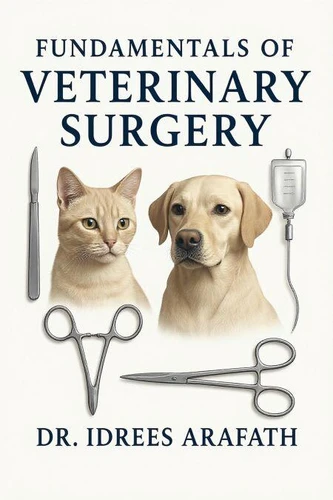Fundamentals of Veterinary Surgery is an indispensable guide for students and practitioners of veterinary medicine. This comprehensive resource delves into the core principles and advanced techniques required for successful surgical interventions in a wide array of species. The book begins with an introduction to the evolution of veterinary surgery, emphasizing the critical importance of understanding comparative anatomy, physiology, and pathology across diverse patients-from common domestic animals like dogs and cats to exotic species.
It meticulously covers essential topics, including:* Preoperative Assessment: Learn how to conduct thorough physical examinations and interpret laboratory diagnostics to assess surgical risk. The text explains the American Society of Anesthesiologists (ASA) physical status classification system, a key tool for predicting perioperative morbidity and mortality.* Aseptic Technique & Sterilization: Master the gold standard of sterilization, steam autoclaving, and other methods to prevent surgical site infections.
Detailed guidance is provided on proper patient and surgical team preparation.* Anesthesia & Pain Management: Gain a deep understanding of anesthetic agents, monitoring, and multimodal pain management strategies. The text offers crucial insights into species-specific physiological responses and the unique challenges of treating patients who cannot communicate their pain. With its emphasis on evidence-based practice and gentle tissue handling, this book equips veterinary professionals with the knowledge and technical proficiency to achieve optimal surgical outcomes and patient safety.
Fundamentals of Veterinary Surgery is an indispensable guide for students and practitioners of veterinary medicine. This comprehensive resource delves into the core principles and advanced techniques required for successful surgical interventions in a wide array of species. The book begins with an introduction to the evolution of veterinary surgery, emphasizing the critical importance of understanding comparative anatomy, physiology, and pathology across diverse patients-from common domestic animals like dogs and cats to exotic species.
It meticulously covers essential topics, including:* Preoperative Assessment: Learn how to conduct thorough physical examinations and interpret laboratory diagnostics to assess surgical risk. The text explains the American Society of Anesthesiologists (ASA) physical status classification system, a key tool for predicting perioperative morbidity and mortality.* Aseptic Technique & Sterilization: Master the gold standard of sterilization, steam autoclaving, and other methods to prevent surgical site infections.
Detailed guidance is provided on proper patient and surgical team preparation.* Anesthesia & Pain Management: Gain a deep understanding of anesthetic agents, monitoring, and multimodal pain management strategies. The text offers crucial insights into species-specific physiological responses and the unique challenges of treating patients who cannot communicate their pain. With its emphasis on evidence-based practice and gentle tissue handling, this book equips veterinary professionals with the knowledge and technical proficiency to achieve optimal surgical outcomes and patient safety.






